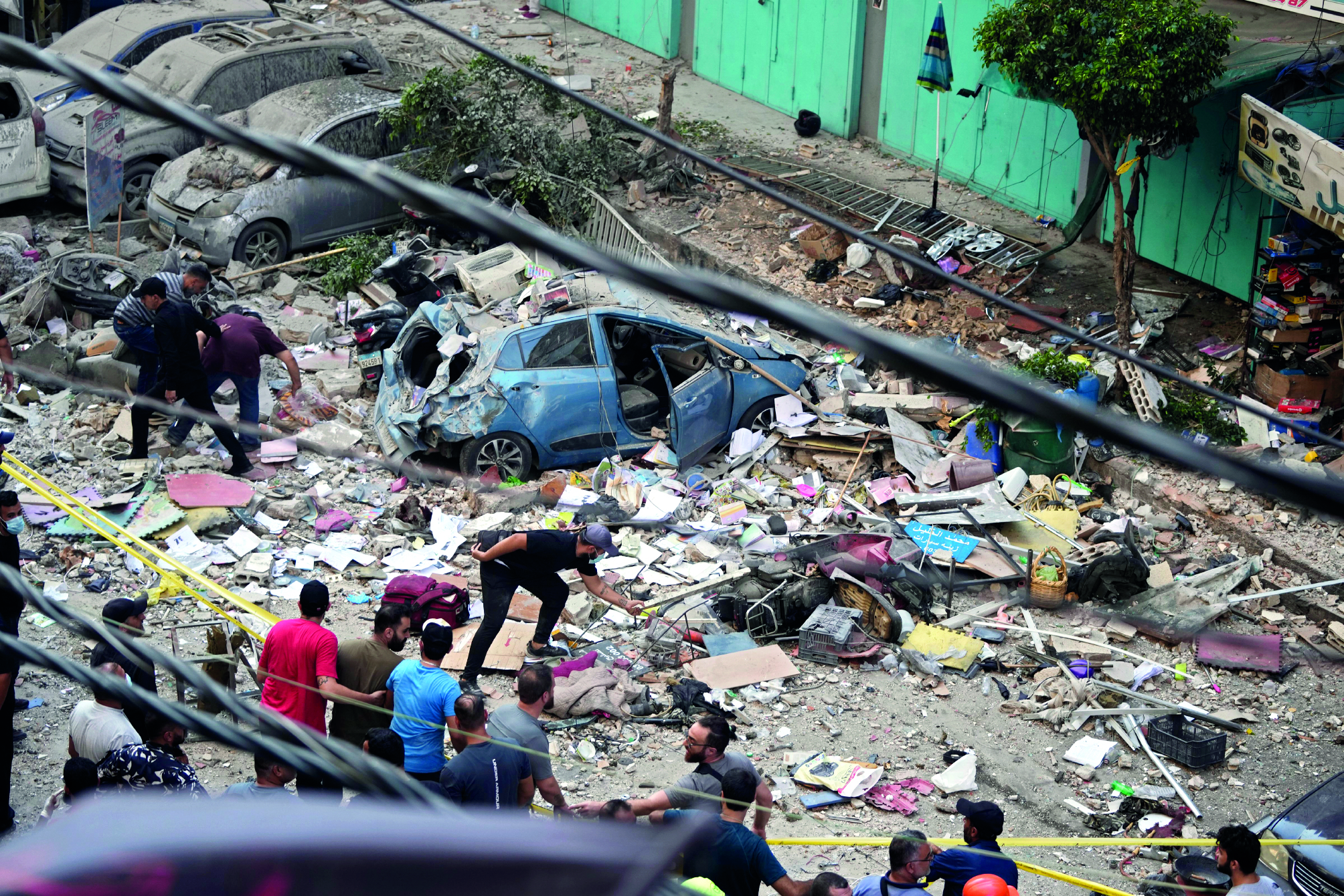Israel, Hezbollah renew fire after deadliest day in Lebanon since 2006

Beirut: Israel and Hezbollah traded strikes again on Tuesday as the death toll from a massive Israeli bombardment climbed to nearly 560 people and thousands fled from southern Lebanon with the two sides on the brink of all-out war.
Displaced families slept in shelters hastily set up in schools in Beirut and the coastal city of Sidon. With hotels quickly booked to capacity or rooms priced beyond the means of many families, those who did not find shelter slept in their cars, in parks or along the seaside.
Issa Baydoun fled the village of Shihine in southern Lebanon when it came under bombing and came to Beirut in a convoy of cars with his extended family. They slept in the vehicles on the side of the road after discovering that the shelters were full.
“We struggled a lot on the road just to get here,” he said.
Baydoun rejected Israel’s contention that it hit only military targets.
“We evacuated our homes because Israel is targeting civilians and attacking them,” he said. “That’s why we left our homes, to protect our children.”
Well-wishers offered up empty apartments or rooms in their houses in social media posts, while volunteers set up a kitchen at an empty gas station in Beirut to cook meals for the displaced. In the eastern city of Baalbek, the state-run National News Agency reported that lines formed at bakeries and gas stations as residents rushed to stock up on essential supplies in anticipation of another round of strikes on Tuesday.
Meanwhile, the border crossing with Syria saw massive traffic jams as a result of people escaping from Lebanon to the neighbouring country.
The Lebanese militant group Hezbollah said it launched missiles overnight at eight sites in Israel, including an explosives factory in Zichron, 60 kilometers (37 miles) from the border.
The Israeli military said Tuesday morning that 55 rockets were fired from Lebanon into northern Israel, setting fires and damaging buildings. Military officials said they carried out dozens of airstrikes on Hezbollah targets, including on a cell that fired rockets overnight, and that tanks and artillery struck targets near the border. Galilee Medical Centre, a northern Israel hospital, said that two patients arrived with minor head injuries from a rocket falling near their car. Several others were being treated for light wounds from running to shelters and traffic accidents when alarms sounded.
The renewed exchange came after Monday’s barrages racked up the highest death toll in any single day in Lebanon since Israel and Hezbollah fought a bruising monthlong war in 2006.
Israel said it targeted sites where Hezbollah had stored weapons. Data from American fire-tracking satellites analysed Tuesday by The Associated Press showed the wide range of Israeli airstrikes aimed at southern Lebanon, covering an area of over 1,700 square kilometers.
NASA’s Fire Information for Resource Management System typically is used to track wildfires across rural areas of the US.
However, it can also be used to track the flashes and burning that follow airstrikes. That’s particularly true when an airstrike ignites flammable material on the ground, such as munitions or fuel.



